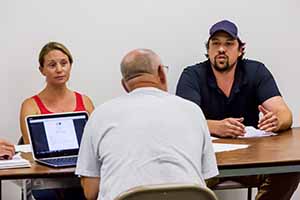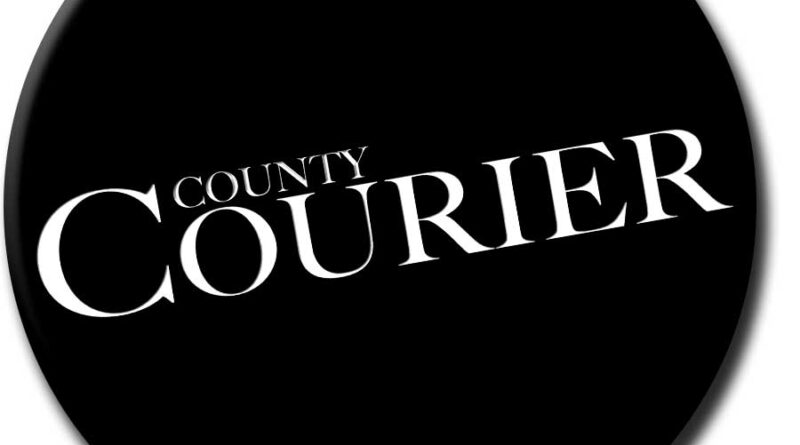MURKY LEGAL WORDING COMPLICATES UPCOMING VOTE
MONTGOMERY CONSTRUCTION COSTS ON THE RISE
By Gregory J. Lamoureux
MONTGOMERY: Voters in the Town of Montgomery are at odds whether to build a new town clerk’s office. The current building is inadequate to the needs of the town, says proponent and Selectman Scott Perry.
Also, a select board member, Sarah Silva, looks at the proposal as a frivolous expense for voters.
At odds between the two sides is a little-known Vermont law that raises almost as many questions as it answers.
Vermont Statute is divided into 33 general categories. Title 6 governs Agriculture, Title 19 governs highways, and Title 24 governs Municipal and County Government.
Within Title 24, Chapter 53, Subsection 1755 deals with how often a municipal government can ask voters for money for any given project.
The law reads, “A municipal corporation may not submit to the voters more than twice in the same calendar year or any twelve month period the proposition of incurring a bonded debt to pay for the same or a similar public improvement.”
So, what’s your definition of 12 months?
According to Scott Perry, one proponent of building a new Town Clerk’s Office, the wording in the statute allows for a vote on November 8th, 2016. That date will coincide with the presidential election, a time that historically increases voter turnout by 20-30%.
“We think it’s legal, and we think it’s needed.” Perry said, “Some people interpret (the law) to be 365 days, it’s not, it’s 12 calendar months.”
That means that if the first vote were to have happened on November 30th, 2015, and a second vote during town meeting day, that the town would be eligible to vote again on November 1st, 2016.
The County Courier checked with the Secretary of State’s office on the conundrum.
Jenny Prosser serves as the general counsel for the Secretary of State’s office in Montpelier which oversees most of the voting laws in Vermont.
According to Prosser, her interpretation of the law is consistent with Perry’s, though she did have a caveat to it.
“We would say that they should really be consulting their bond counsel on this because I think you could read the statute more than one way.” Prosser said, “When we read this statute, we think it permits the selectboard to present to bond voters two consecutive town meetings in a row.”
She went on to say that “the law does not say 365 days, which it could.”
The law, dating back to 1917, was intended to prevent municipalities from going back to the voters week after week for approval until the voters approved a bond.
According to Prosser, the law was last updated by the legislature in the 1970s.
One of the challenging parts of this law is that the Secretary of State’s office does not know of any case history.
Prosser said that Montgomery is the first municipality to be accused of violating the almost century-old law.
“We’re reading the language of the statute, which is really inherently not clear,” said Prosser.
Seletboard member Sarah Silva disagreed with Prosser and Perry on the interpretation of the law. She believes that if a vote is taken on November 10th, 2015 (as it was last year), and a second vote was taken during town meeting day (as it was this year), then the town is not eligible to vote on the topic until November 11th, 2016.
She backs up her claim with an email from the Town’s Bond Counsel, Paul Giuliani.
Silva read a portion of an email from Giuliani, “Submitting this proposition again on November, 8th, 2016 during the general election would be in excess of the statutory limitations.”
Typically there are two ways to get something on the ballot, either the selectboard decides to have it included, or the taxpayers circulate a petition to have an issue listed on the ballot.
Prosser said that she didn’t know if it would make the vote legal to have the voters petition to have it added to the ballot instead of going directly through the selectboard because it’s still the selectboard that is signing off on adding the question to the ballot.
THE UNDERLYING ISSUES
Perry painted a bleak picture of the existing town clerk’s office during the meeting with the public. He said the building is riddled with mold that affects the workers in the building, as well as a need for more square footage both inside and outside of the vault.
Perry said the vault can’t hold everything that is needed for the town at this point in time. He said that some of the oldest records, which don’t fit in the vault anymore are being stored in what amounts to Tupperware containers.
“These are the crown jewels of the town,” Perry said about the early documents of the town.
Perry told citizens at Monday evening’s selectboard meeting that the town clerk had to be moved out of the building because she was experiencing health related issues, apparently due to the mold in the building.
The selectboard made the decision earlier this year to temporarily move the town office to the Emergency Services building to accommodate the health issues of the Clerk.
According to Perry, Vermont doesn’t have a standard for mold in buildings and the town didn’t legally have to make the move.
“Maybe it’s time for her to find another job,” said a citizen attending the meeting.
“We can’t get rid of her,” Perry said, “She’s an elected official.”
Currently, the town has a 54 square foot vault, according to information published in the most recent town report.
The proposal would magnify that by five times, to about 255 square feet.
A suggestion to digitize the old (and new) records to conserve space was recommended by a taxpayer, but perry was quick to say that the Town still has to maintain the originals and have them available for viewing if they are needed.
COMPLICATING ISSUES
The current Town Office shares the building with the Montgomery Center Post Office as well as a space for a TD Bank ATM.
Together the rent generates about $13,100 for the town, according to records.
Perry was concerned that if the town booted the Post Office from the premises in order to make enough room for the Town Clerk, the post office would decide not to continue having a facility in the town.
“We’ve all had those survey postcards from the post office,” Perry said, “There’s always the option to go to Enosburg to mail your packages.”
MOVING FORWARD
Meanwhile, the Selectboard was given an updated pricing estimate showing an increase of about 8% to $962,049.
In that estimate, provided by Arnold and Scangas Architects, the estimate also cited a possibility that the new building may have to have sprinklers, a cost of $25,000 that was not previously added to the estimate.
The building plans have not been changed from the prior vote, which was turned down by voters by just two votes.
The 2900 square foot proposal measures 56 feet wide by 54 feet deep.
The estimate also did not take into account any costs associated with furnishing the new building, new vault or phone, and telecommunication equipment.
“I think the space we have is adequate,” Selectboard member Colin Sorenson said during the discussion, “If you clean it up it may be useable.”
“The thing I object to is a 292-square foot lobby, a public meeting and work room of 439 square feet. Those are quite sizeable spaces,” Silva said.
“Those aren’t that big, Sarah,” said Scott.
“That’s your opinion,” Said Silva.
Perry went on to defend the need for a larger meeting area for meeting with hot button issues where dozens of citizens attend.
“We have a meeting space, It’s called the Grange,” Said Silva.
Perry interjected that it’s not just about a meeting space, it’s a place where the Listers work.
“They have a place to work,” said Silva citing a 359 square foot office, 167 square foot research area, and an 184 square foot reception area.
“There’s like four people working in there,” Perry said.
“Okay, were going to have to just agree to disagree,” Silva said, “Because I think that this plan is extravagant.”
What’s our population, 1,200 people?” Sorenson asked, “This is not a 1,200 person proposal.”
“What are the increased services that we are getting from this?” Silva quipped, “How does this benefit the taxpayers of the town?”
When the board deliberated, Mark Brouillette and Perry were definite supporters of another vote while Silva and Sorenson opposed asking the voters again in November.
Chairman Charlie Hancock said that he initially supported the November vote, but seems on the fence now about the vote.
“I think that in November is when we’re going to get the best turnout for a vote, that being said, after everything that I’ve heard from these two meetings and everything that I’ve heard between last week and this week, two things stand out.” said Hancock “I worry that if a vote would come up in November, would it pass.”
“I don’t want to bring something forward that I don’t think would pass,” continued Hancock, “At this point, I’m not 100% convinced that it would pass.”
“The other concern that I have is the question of a lawsuit.” said Hancock, “Like Scott (Perry) said, I don’t want to be held hostage by a lawsuit, but then again if I know for certain that someone is going to sue us, I do have a hard time going forward with it.”
Sorenson said that his feeling comes down to a business plan.
“Let’s come up with a plan that identifies the known and unknowns. We know that prices are going up,” said Sorenson, “I’m looking at the end of this saying, hey, what are we going to look for at the end of this? Are we going to be able to provide long-term budget stabilities for four buildings.”
“I need to have a really good game plan to go back and say ‘I got behind the bond vote because…’,” Sorenson said.
“I don’t view this as an isolated issue,” Silva said, “It’s an issue that involves multiple buildings and multiple projects. Our plan needs to include as many of those variables as we can. And I think that needs time. More Time.”
Time is running out for the selectboard. They have scheduled a special meeting on September 12th to make a decision on having a vote or not.
The Montgomery Town Selectboard must make a decision by September 19th on whether to bring this to voters in November.



